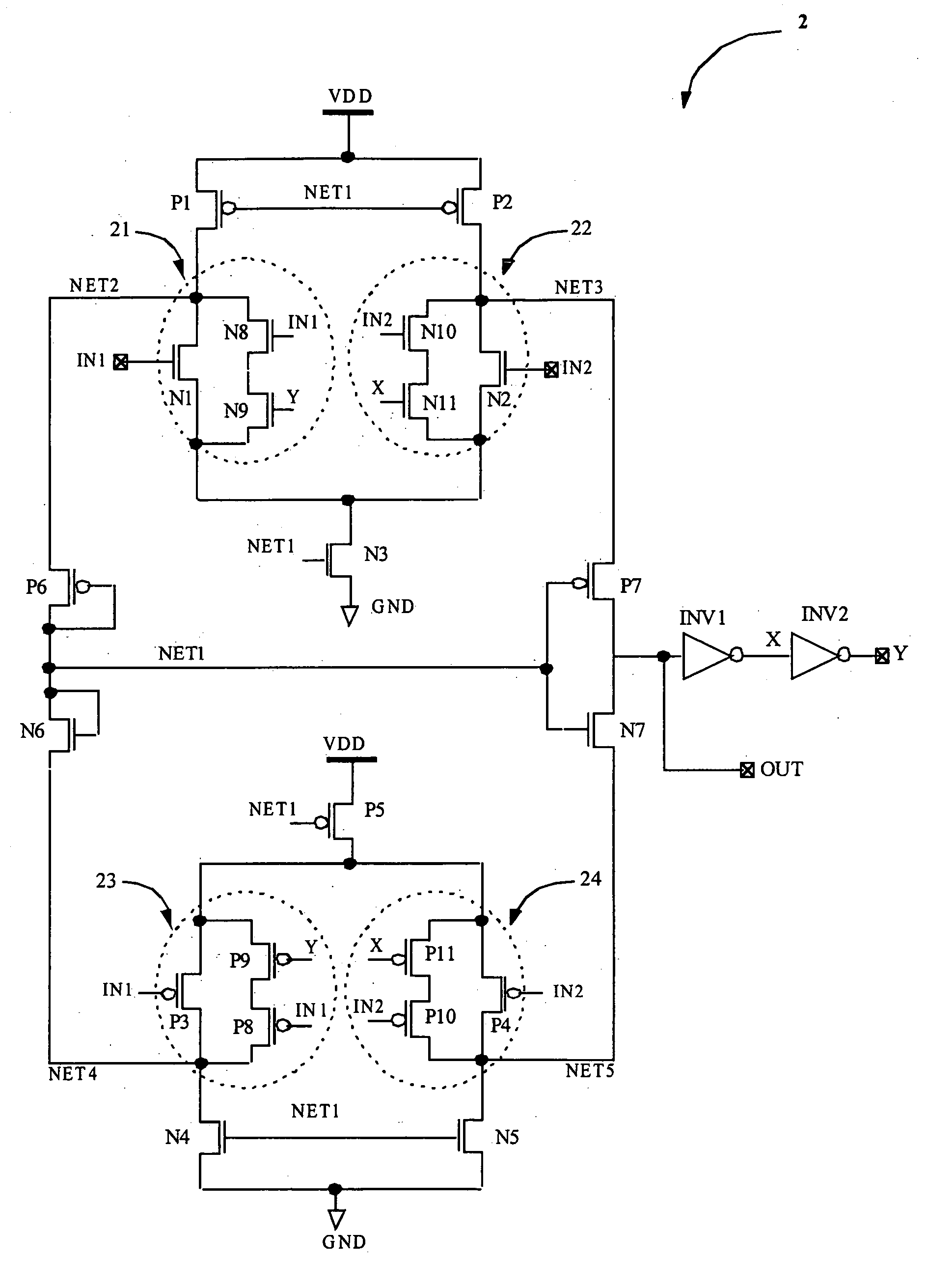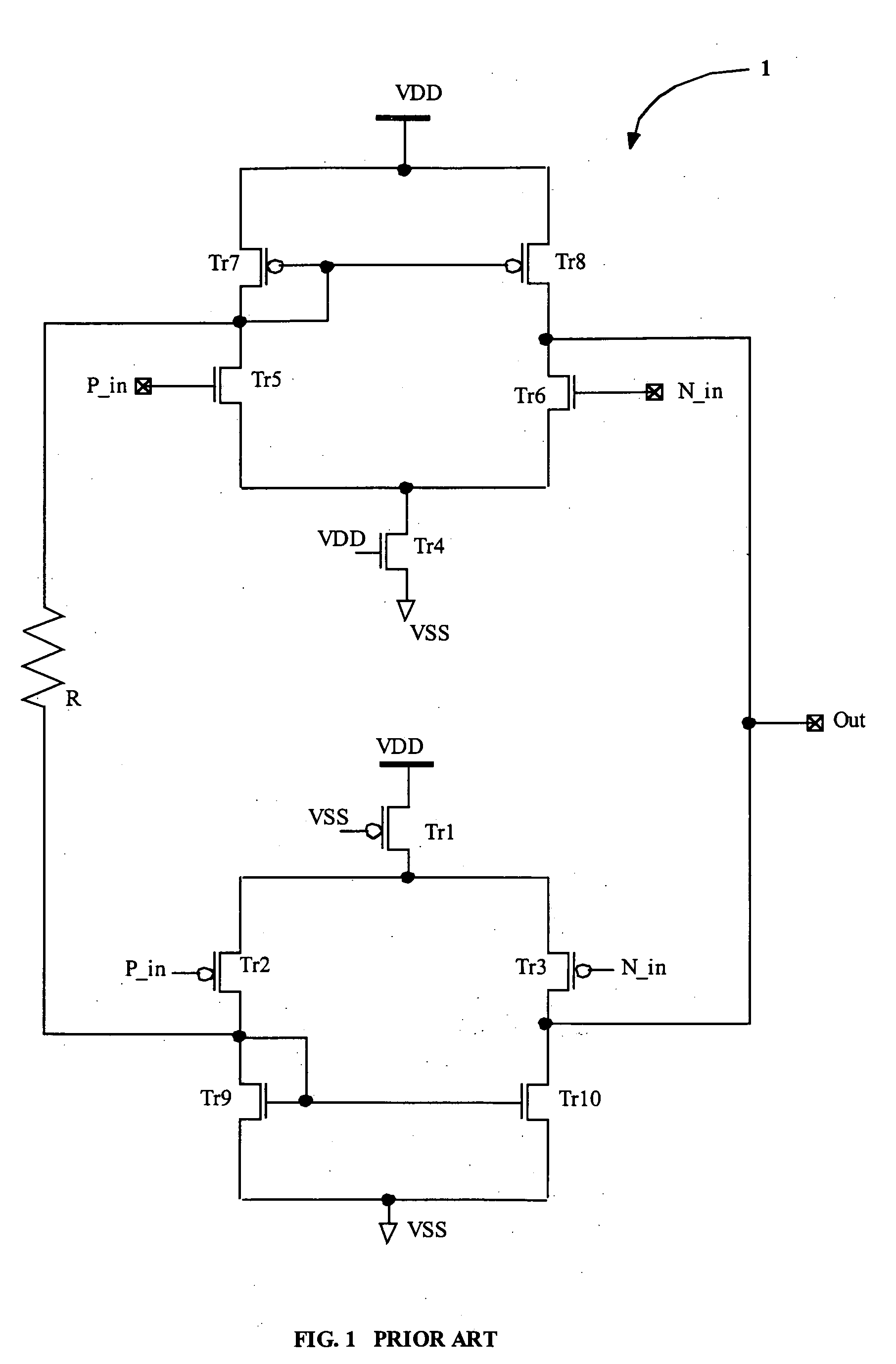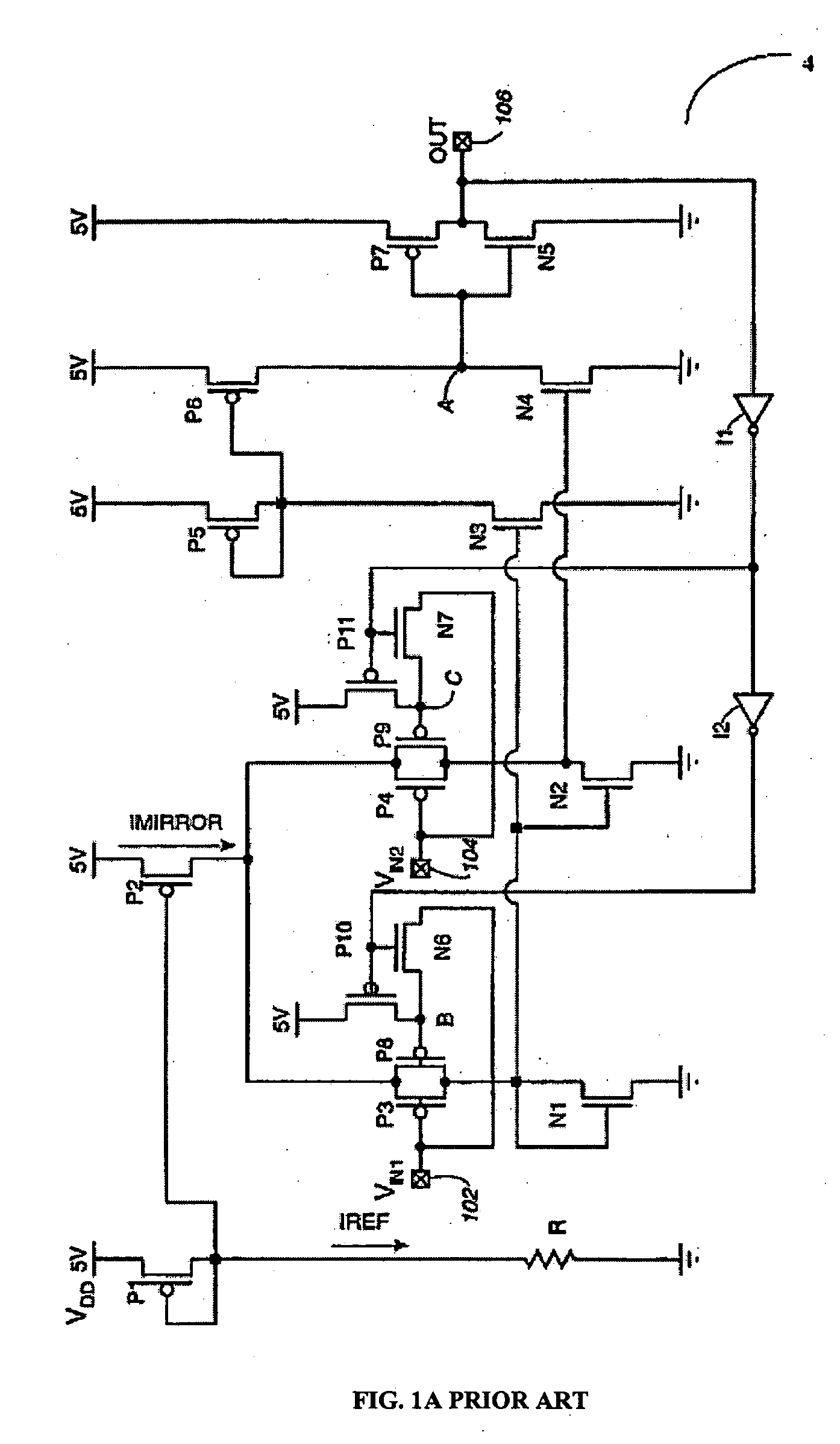Differential input receiver
a receiver and input technology, applied in pulse manipulation, pulse technique, baseband system details, etc., can solve the problem of higher potential for noise-induced interference, and achieve the effect of constant symmetrical hysteresis
- Summary
- Abstract
- Description
- Claims
- Application Information
AI Technical Summary
Benefits of technology
Problems solved by technology
Method used
Image
Examples
case 1
HIGH Transition
[0022] Initially IN12 and OUT=LOW so X=1 and Y=0. In this case, for NMOS differential amplifier, transistor N9 is OFF, cutting off the current path to transistor N8. Also transistor N11 is ON, hence transistor N10 is in parallel with transistor N2. As IN1 is less than IN2, the resistance of N2 is less than N1. As transistor N10 is in parallel with transistor N2, the effective resistance of branch 22 becomes much smaller than that of branch 21. As a result, the current through branch 22 is much greater than the current through branch 21. Now if IN1 increases and IN2 decreases, the resistance of N1 decreases and resistance of N2 increases. When IN1 and are equal IN2, the resistance of transistors N1 and N2 are equal but still X=1 and Y=0, this keeps transistor N10 in parallel with N2 and N8 is cut off, so the effective resistance of branch 22 is still less than branch 21. On further increase in IN1, say IN1 is just less than VTH (IN1˜VTH), the resistance of branch 21 be...
case 2
o LOW Transition
[0025] Assuming, IN1>IN2 initially and OUT=HIGH. So X=0 and Y=1. As IN1>IN2, in NMOS differential amplifier the resistance of transistor N1 is less than that of transistor N2. Moreover as Y=1 and X=0, which makes transistor N9 ON and transistor N11 OFF, so that transistor N8 comes in parallel with transistor N1 while transistor N10's path is cut off. So the effective resistance of branch 21 is much less than that of branch 22. Hence the current through branch 21 is greater than that in branch 22 which keeps OUT at HIGH, X=0 and Y=1.
[0026] If IN1 decreases and IN2 increases, the resistance of transistor N1 increases while that of transistor N2 decreases. But still X=0 and Y=1, which holds transistor N9 ON and transistor N11 OFF. This keeps transistor N8 in parallel with transistor N1 while transistor N10's path is cut off. So the effective resistance of branch 21 is still less than that of branch 22 and current through branch 21 is still greater than branch 22.
[0027...
PUM
 Login to View More
Login to View More Abstract
Description
Claims
Application Information
 Login to View More
Login to View More - R&D
- Intellectual Property
- Life Sciences
- Materials
- Tech Scout
- Unparalleled Data Quality
- Higher Quality Content
- 60% Fewer Hallucinations
Browse by: Latest US Patents, China's latest patents, Technical Efficacy Thesaurus, Application Domain, Technology Topic, Popular Technical Reports.
© 2025 PatSnap. All rights reserved.Legal|Privacy policy|Modern Slavery Act Transparency Statement|Sitemap|About US| Contact US: help@patsnap.com



